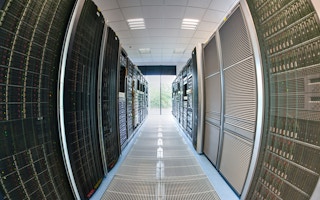When designing a new data centre, it’s important to consider not only what you’ll get out of it, but also what must go into it.
Attention naturally tends to focus on the processing and storage capabilities of the new facility. Will it be able to support your organisation’s growing computing needs? Can it be expanded to support future demand growth? Does it have resilient network links?
However, an equally important consideration is the resources that will be required to keep the data centre operating – and topping this list is electricity.
According to a recent research report by US-based Digital Power Group, the global technology sector now consumes almost 10 per cent of the world’s total electricity output. A significant slice of this amount is used within data centres.
Data centres are by their nature hungry beasts when it comes to electricity. Racks of servers and ancillary equipment must be powered and cooled around the clock. Finding new ways to achieve this as efficiently as possible has become a global quest.
Since 2007, Digital Realty has been a part of The Green Grid, a non-profit industry consortium comprising IT companies, end users and policy makers. The primary goal of the organisation is to improve the operating efficiency of data centres. We are now involved in The Green Grid’s Southeast Asia endeavours and the consortium launched its office in Singapore a couple of weeks ago.
“
Data centres are by their nature hungry beasts when it comes to electricity. Racks of servers and ancillary equipment must be powered and cooled around the clock.
Finding ways to improve the energy efficiency of data centres requires a multi-pronged approach. Factors at play include everything from geographic location and local climate to the specific systems used to cool equipment. Forensically assessing all these variables is a big task.
That said, consistent progress is being made. One example is the rise in outside air economization within a growing number of data centres in climates conducive to this practice. This technique involves using air drawn from outside a data centre to cool racks.
Another example is the use of modular pods within data centres. Rather than having a more traditional hot/cold isle approach to design, racks are housed in pods thereby reducing the volume of air that needs to be cooled. Such techniques can significantly improve the overall Power Usage Effectiveness (PUE) rating of a data centre.
Here in the Asia Pacific region, progress is being made – but there is still room for improvement. According to our recently published 2014 APAC data centre demand survey, almost a third of organisations in the region said the PUE metric was either not important or they were not familiar with it.
As the number of data centres across the region continues to increase, it’s important we maintain our efforts to find ways to improve energy efficiency. These efforts must cover everything from data centre design and construction to the ways in which water and electricity are used in their operation.
Through co-operative initiatives such as The Green Grid, the industry can focus its attention on improving data centre efficiency and, as a result, improve both the region’s environmental credentials and the economic bottom line.
Peter Adcock is vice-president of design (Asia Pacific) at Digital Realty. This article was written exclusively for Eco-Business.


















